Read the stories of four that either survived or succumbed to the flames, and how they reemerged from the ruins.

While decisions on behalf of the parish were made by a select group of influential Churchwardens, an array of church officers were on the ground to help carry out their decisions. They assessed the needs of the community both providing services and policing the behaviour of parishioners.
Questmen, later called Sidesmen, collected parish tithes or rents and acted as assistants to the churchwardens. Questmen were part of the select vestry, the inner-circle, decision-making core of the vestry. They helped support and carry out the committee’s decisions. While other historic parish roles may have disappeared today, sidesmen still exist today.
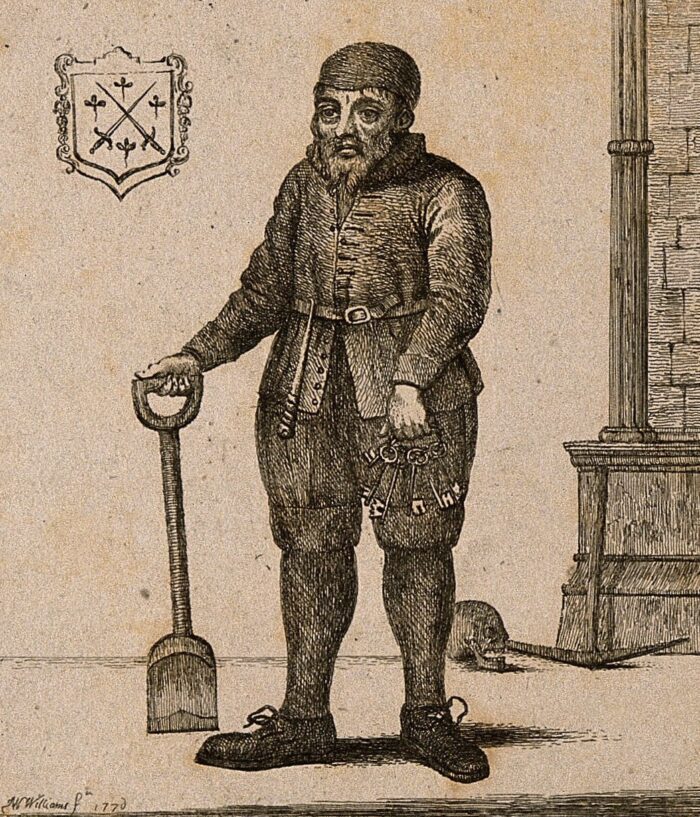
Robert Scarlet, sexton of Peterborough cathedral. Etching by W. Williams, 1779, Wellcome Collection.
The sexton helped in the management of the church building, alongside his roles as bell ringer, key keeper and gravedigger. Sextons were usually men, however, there were some notable exceptions. Read more about sextonesses at the Borthwick Institute blog. They often had multiple parochial jobs such as Sam Hammond who in the 1680s was a bearer and vestry clerk as well as his role as sexton.
The scavenger was responsible for keeping the church clean when it was completed, and for employing rakers to (muck)rake the streets.
A minimum of four auditors were elected in the vestry to check the accounts which were written in the name of each churchwarden. Parishes were also responsible for recording births, marriages and deaths, which was probably a task of the vestry clerk.

Searchers of the dead, usually poor, elderly women, were paid to investigate sickness and death in the parish. The gruesome and very risky job required them to find and examine corpses closely to determine the cause of the death. The great fear was that bubonic plague – the Black Death – was the reason.
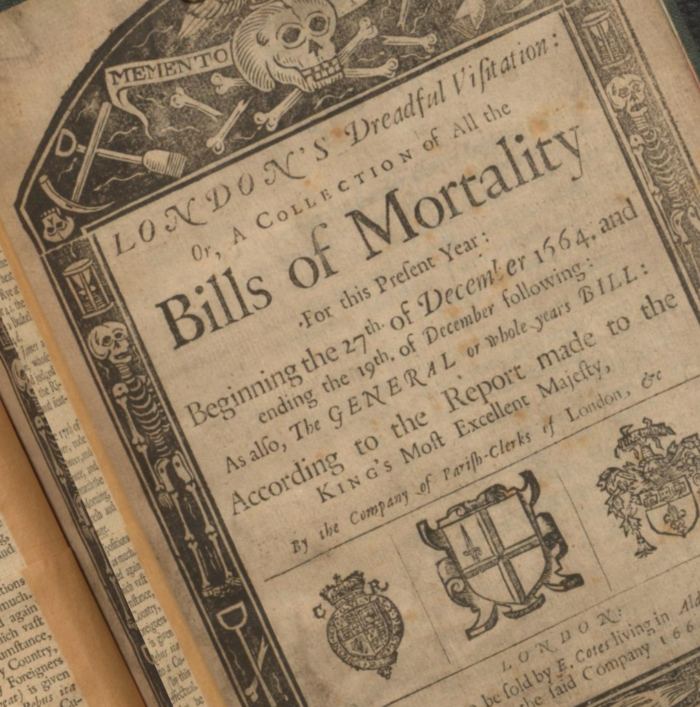
Searchers would report deaths and the suspected cause to the parish clerk who compiled the findings in bills of mortality which kept track of outbreaks and noted any rise in deaths. During the Great Plague of London in 1665 these bills became weekly.
Samuel Pepys wrote on Nov 9, 1665. “The Bill of Mortality, to all our griefs, is encreased 399 this week, and the encrease general through the whole city and suburbs, which makes us all sad”.
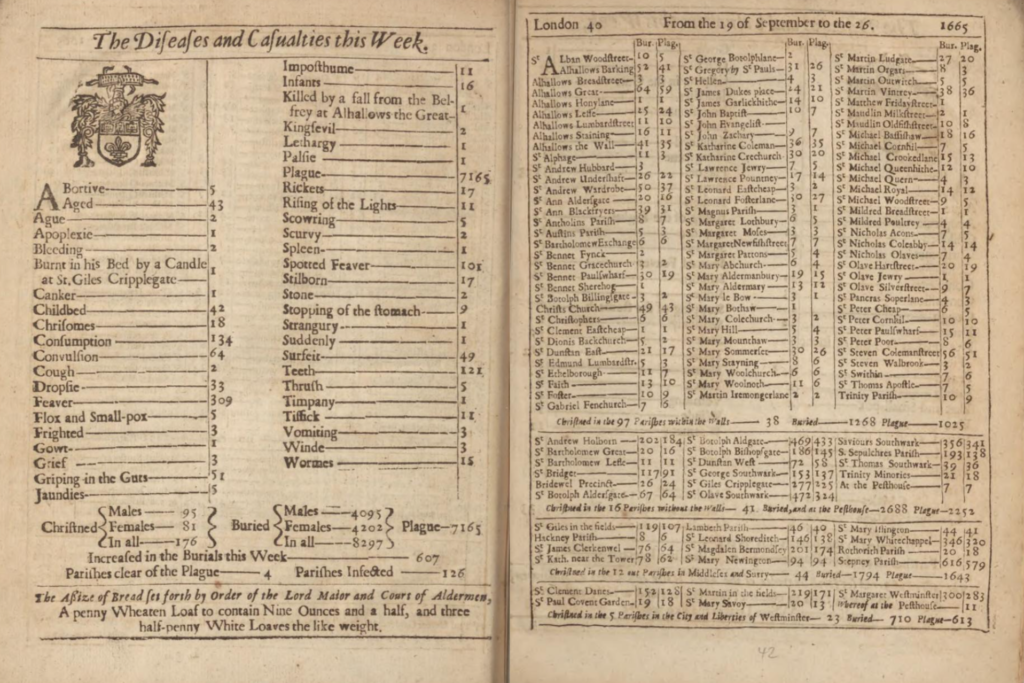
Searchers were paid for each case; but it was a dangerous profession. Plague was highly infectious and their was no cure. Many searchers succumbed to the disease themselves. By the late seventeenth century, however, plague was becoming less prevalent and many searchers instead turned to nursing tasks.
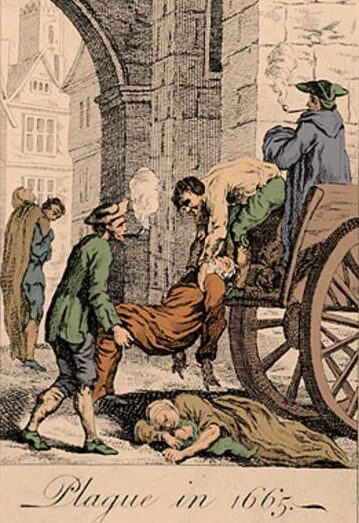
Bearers worked alongside the searchers and were employed to move corpses. During the worst outbreaks and the Great Plague of 1665 when an estimated 100,000 or one-fifth of London’s population died, bearers were in constant work. However, their rates were fixed in order to stop an escalation of charges facing scared and vulnerable people. Like searchers, when the worst epidemics disappeared, their role changed. Bearers instead assisted as coffin bearers at funerals.

Beadles were vestry officers who supported constables in their role but they focused on behaviour in the church and church yard. They enforced respectful observance and conformity to moral and religious codes. They concentrated on the ‘remissness and irregularity’ of parishioners as defined by Canon law: drunkenness, whoredom, incest, swearing, usury and any schismatic or popish doctrines and disruptive behaviour. Their role expanded over the decades.
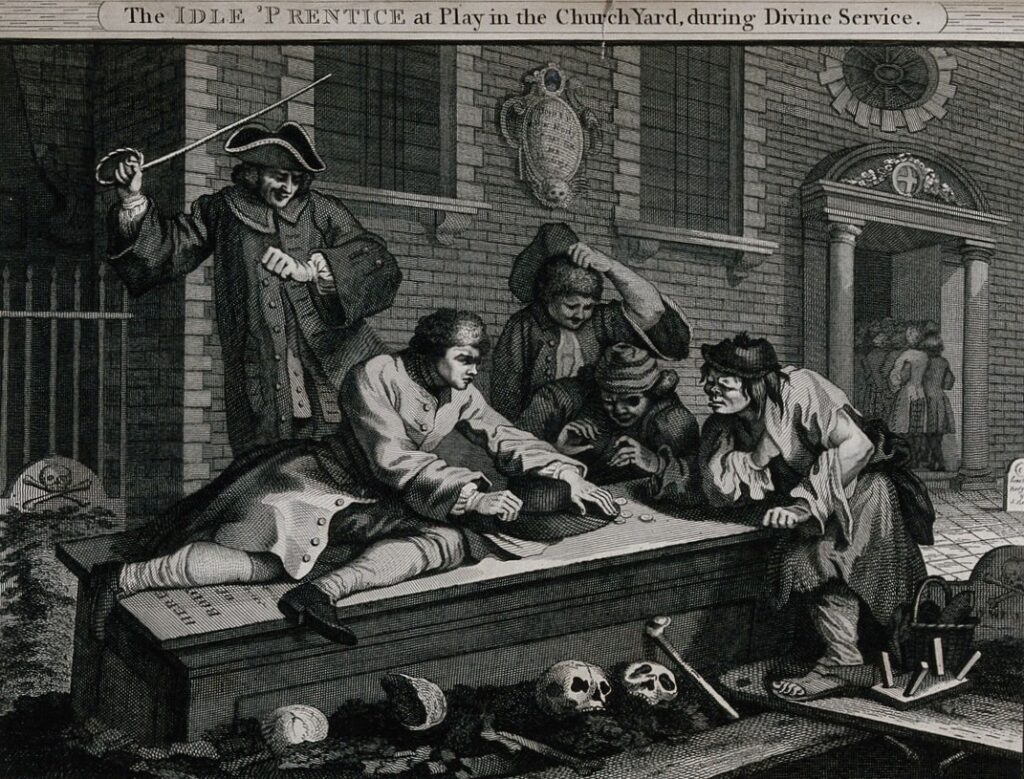
Read the stories of four that either survived or succumbed to the flames, and how they reemerged from the ruins.
Keep up to date with the latest news ...